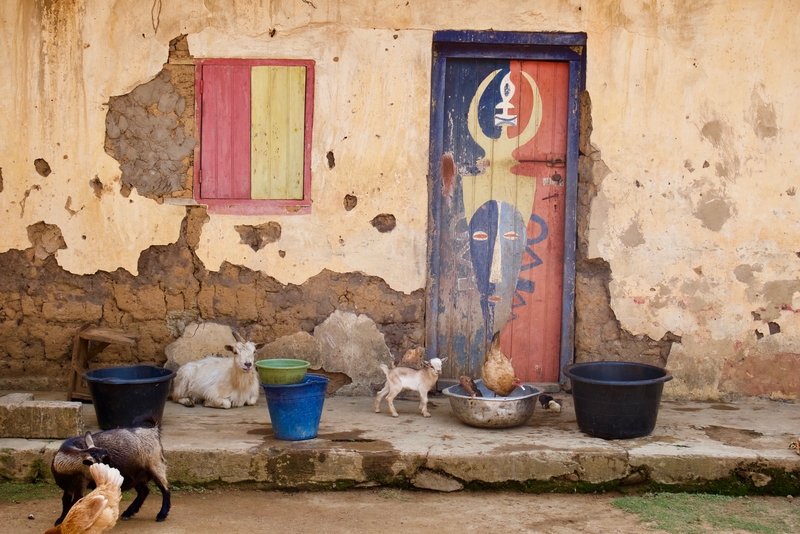
Togo Travel Guide: Overland Travel in West Africa
Togo is a seldom-visited country in the heart of West Africa. Sandwiched between Ghana and Benin, the small vertical nation flies largely under the radar. And without the jaw-dropping natural splendors or wildlife-rich parks found on other parts of the continent, it is not difficult to see why.
Togo doesn’t have the types of attractions that draw large crowds or tour groups. Instead, Togo offers a taste of Africa that is raw and unfiltered. Traveling to Togo reveals an Africa bursting at the seams with color. An Africa that welcomes wayward visitors with curiosity and offers them glimpses into a bygone era.
Overland Travel to Togo, West Africa
I visited Togo as part of an organized tour with Dragoman–a company that specializes in overland adventure travel. Alongside twenty other globetrotters, I spent three weeks traveling throughout Ghana, Togo and Benin in a large orange truck. For those three weeks, the truck was our home. It housed everything from our tents to our fold-out kitchen to our filtered water supply. In our large orange overlanding vehicle, we rumbled down dusty roads, passed through wildlife-rich parks and visited remote villages forgotten in time.
It was the adventure of a lifetime, though the trip came with West African-style challenges that are only appropriate for seasoned travelers.
Traveling in West Africa is tough; there are no two ways about it. In fact, I’d be willing to say that West Africa is one of the most challenging travel destinations in the world. Aside from Ghana and Senegal, tourist services throughout West Africa are extremely limited. Roads are challenging. Hotels are either nonexistent or a far cry from western standards. Bureaucracy is alive and well.
Togo is no exception.
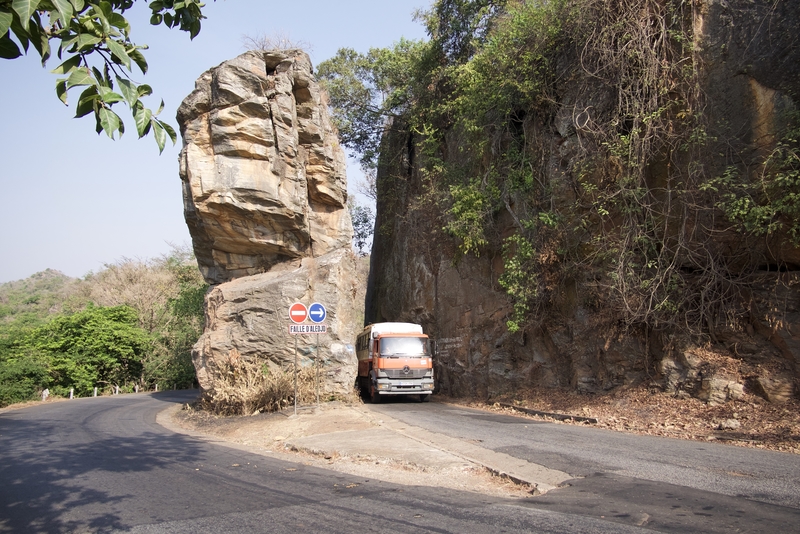
While searching for Togo travel guides or blog posts online before my trip, my efforts came up empty. Even Lonely Planet seemed to have little to say about travel to Togo. Thus, before my trip to West Africa, I had a general idea of what I could expect from the Ghana and Benin portion of my trips, but very little idea of the things to see and do in Togo.
Luckily, for the first time in years, I didn’t have to create my own travel itinerary. Dragoman had already done it all for me. So with a bit of oblivion as to our plans, I followed along for the ride and discovered the highlights of Togo in the process.
Mount Klouto Villages in Togo
Mount Klouto was the first stop on our Togo travel itinerary. After a bumpy six hour drive from Ghana’s Volta Region, our group arrived at the village of Kouma Konda. The village–a small settlement nestled in Togo’s verdant highlands–was our base for two days. During our two days on Mount Klouto, we stayed in the Hotel Campement de Kloto and took guided walks around the surrounding hillsides.
Mount Klouto is a 710 meter hill that is one of Togo’s tallest peaks. Dense forest blankets the mountainsides, punctuated by gently cascading streams and waterfalls. These verdant woodlands constitute an ideal habitat for over 1,000 species of butterflies.
On the day of our arrival in Togo, we took a short guided hike to the summit of Mount Klouto. The hike afforded views of Mount Agou, the Volta Region in Ghana and the nearby town of Kpalime.

On the following day–led by a local naturalist guide who explained the flora and fauna of the area–our group participated in a guided walk through the surrounding villages.
During our hike, we visited a schoolhouse, bought beautiful batik art and learned about about the plants and animals that inhabit the slopes of Mount Klouto. The final destination of our hike was a refreshing waterfall where we were able to immerse ourselves in nature while letting the buildup of grime and sweat wash off our bodies.
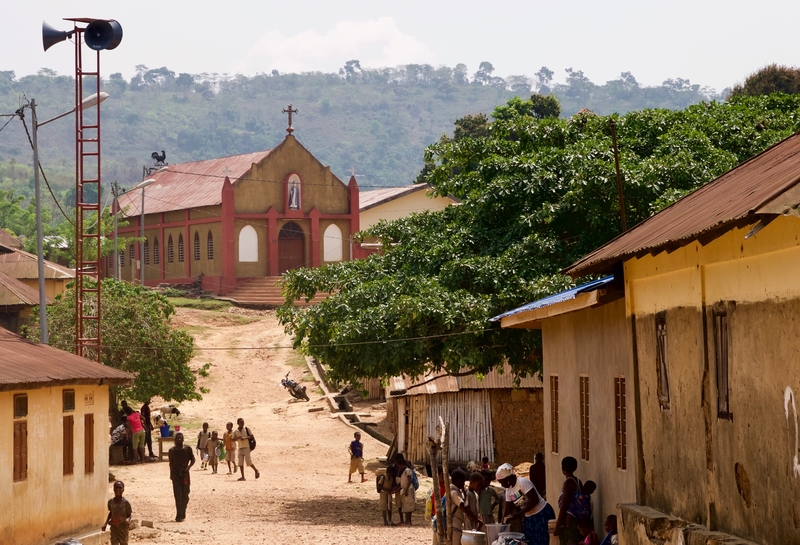
After two days in the highlands of Togo, we descended to the lowlands and stopped at the sprawling Kpalime Market to stock up on food. The next destination on our Togo travel itinerary was the beautiful Koutammakou UNESCO site that spans a large area of northern Togo and Benin. To reach our destination, we would have two long days of driving up the spine of Togo.
But first, our drivers suggested we stop at a sacred bat valley near Kpalime.
The Sacred Bat Valley near Kpalime
Central Togo’s valley of bats is home to millions of winged mammals. The local population traditionally viewed the bat population as a source of food. In recent years, however, the bats inhabiting the valley have been protected and deemed sacred.
Our guide led us down a dusty red path, into a forested valley. From the path, I could see bats cloaking every inch of the forest. As soon as our guide clapped his hands, we heard ominous cries. Bats flew from trees in the thousands, forming an inky cloud in the afternoon sky.
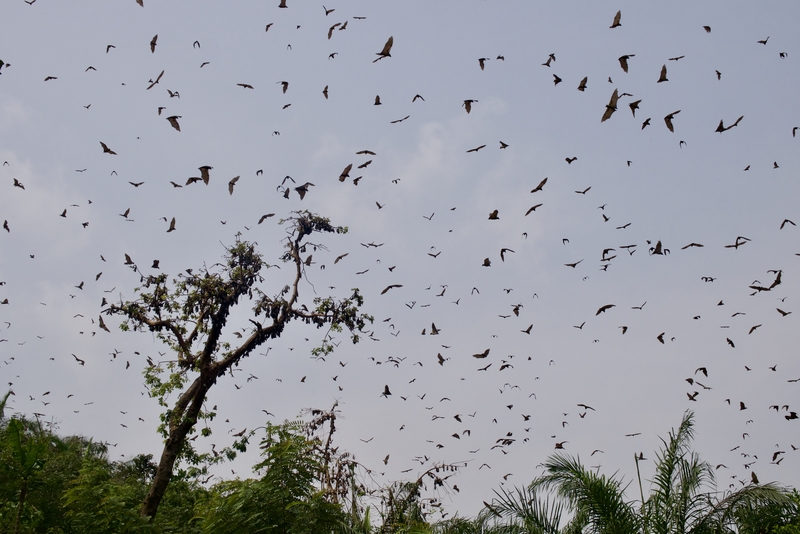
The bat valley in Central Togo is so obscure that I’m not even sure it has an official name. It isn’t mentioned in travel guides or recognized as being one of the top things to see in Togo.
Yet, though we stumbled upon it somewhat unexpectedly, the sacred bat-filled valley near Kpalime quickly made a home for itself amongst our list of top Togo attractions.
Koutammakou UNESCO Site in Northern Togo
If there is one major thing to see in Togo, Koutammakou is it. An undeniable highlight of travel to West Africa, Koutammakou is a UNESCO World Heritage Site that spans a large swath of land across northern Togo and Benin.
Koutammakou is a living cultural landscape inhabited by the Batammariba people. Encompassing a dry, baobab-speckled plain, the area contains a smattering of remarkable two-story houses called takienta. The takienta mud houses have become a symbol of Togo.
In Benin, the area is known by a different name: Tata Somba, or land of the Somba people.
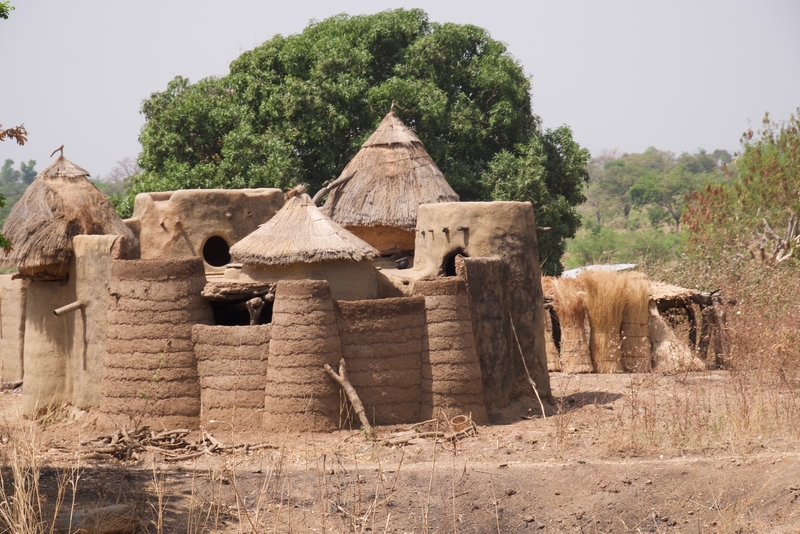
We spent very little time in the Koutammakou area of Togo and chose, instead, to visit the Tata Somba houses for a few days in nearby Benin. Nevertheless, driving though the UNESCO-protected area was unforgettable.
From the roof seats of our big orange bus, we watched daily life unfold around us. Men and women sat in the shade of large baobab trees, searching for respite from the relentless heat of the Sahel. Children ran down dusty streets toward water pumps, balancing large pots on their heads.
All the while, there seemed to be no other tourists in sight.
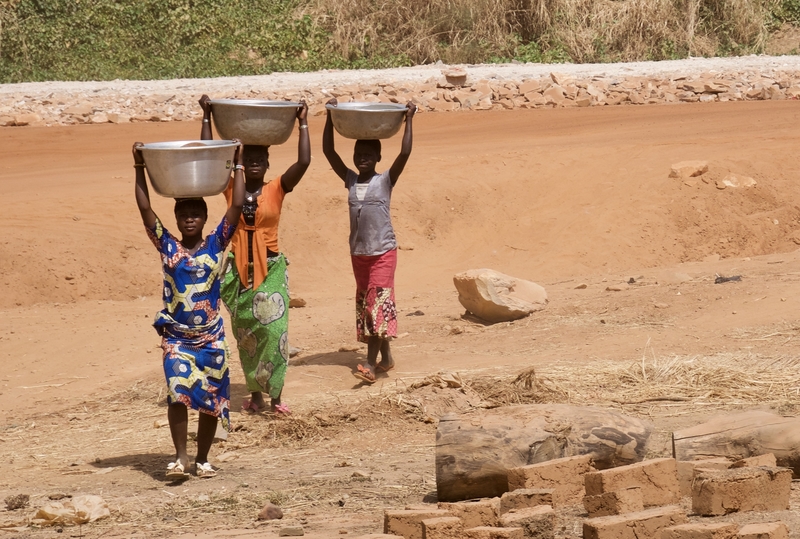
Driving through Koutammakou gave us a fascinating glimpse into one of West Africa’s best-preserved cultural landscapes. Due to the site’s remote location and relative obscurity, the interactions we had with locals seemed both genuine and authentic–reminding me much of my visit to the Himba villages in Northern Namibia.
Togoville: Voodoo Village on Lake Togo
Our West Africa overlanding itinerary brought us from Togo’s Koutammakou World Heritage Site into Benin’s Tata Somba area. From there, we spent about ten days traveling the length of Benin, before re-entering Togo near the capital of Lome.
Our second visit to Togo was shorter than the first. After a relatively easy border crossing from Benin, we reached our campsite near Agbrodafo and spent the remainder of the day relaxing by the lakeside beach.
On the following day, we took a day trip by dugout canoe, across the lake’s shallow waters, to the voodoo town of Togoville.
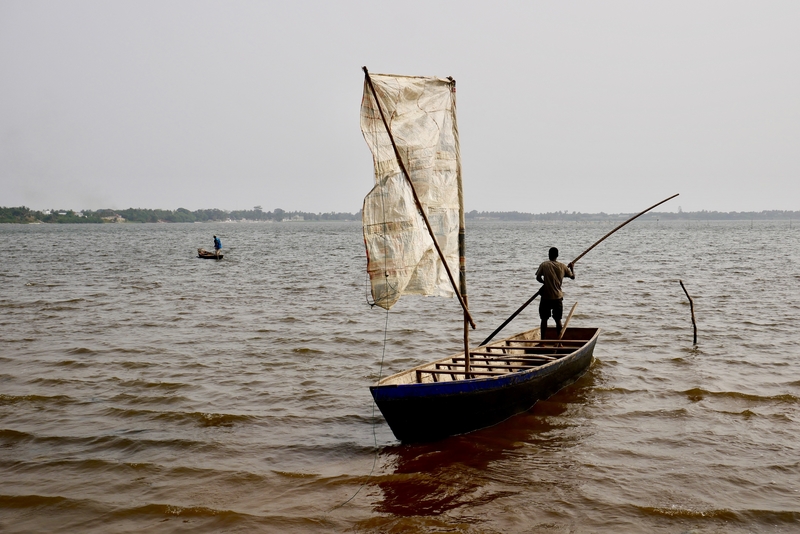
Confusingly, the city of Togoville (originally known as Togo) became the capital of Togoland (the present-day country of Togo) when King Mlapa III and explorer Gustav Nachtigal signed a treaty granting Germany jurisdiction over the area. Togoland become one of Germany’s colonies and Togo (the present-day city of Togoville) became the first capital of the country.
The Togoville Cathedral stands as a testament to Germany’s colonial history in Togo. The cathedral, built in 1910, sits adjacent to a shrine that commemorates the Virgin Mary’s alleged apparition on Lake Togo. The cathedral and its adjacent shrine are undeniably Togoville’s top tourist attractions.
The most interesting aspect of the Togoville Cathedral is its depiction of black African saints. According to our guide, the saints were drawn as black Africans in order to appeal to the locals dissuade them from practicing Voodoo.
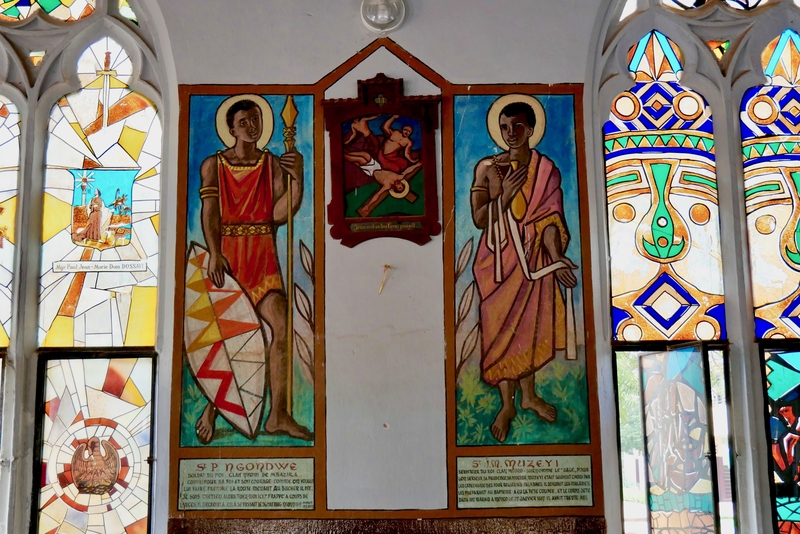
The appeal didn’t work, however. Voodoo shrines are everywhere in Togoville. And today, Togoville remains one of the most prominent Voodoo centers in Africa.
After our visit to the Togoville Cathedral, we strolled the pleasant streets of Togo’s former capital and discovered its numerous active places of worship. The voodoo shrines offered a fascinating glimpse into a religion that is foreign and often misunderstood in the West.
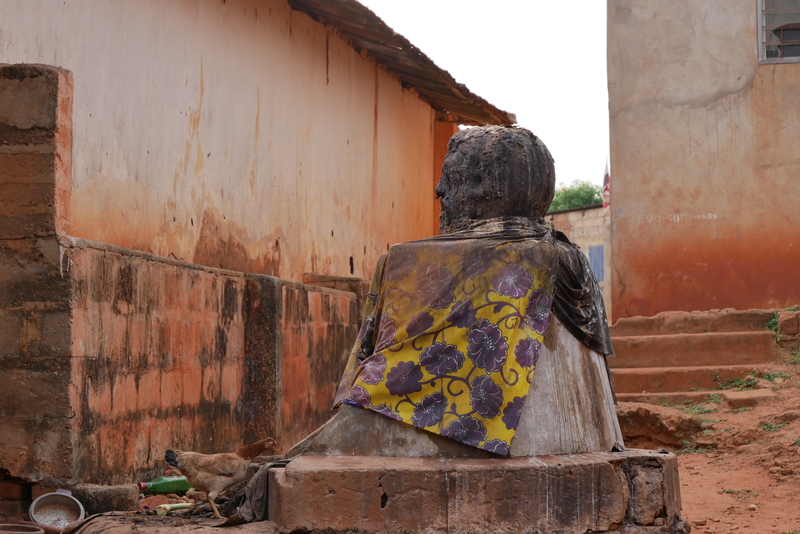
***
Travel to Togo is tough. Even seasoned adventurers should think twice about what visiting this remote corner of West Africa entails. Traveling to Togo means foregoing luxuries that are commonplace throughout much of the world. The food is basic, accommodation options are rudimentary and tourist amenities are virtually nonexistent.
Tourists seeking to check attractions off their bucket lists have little reason to travel to Togo. With few big-name attractions or must-see sites, there is little consensus on the best things to see and do in the tiny strip of land.
Instead, I found that Togo’s beauty lies in its vibrant colors and its adherence to beliefs that predate colonial influences.
By traveling to Togo, those looking to get under Africa’s skin and experience a place that is still raw, authentic and miles from the nearest tourist trap, may just find what they are looking for.

